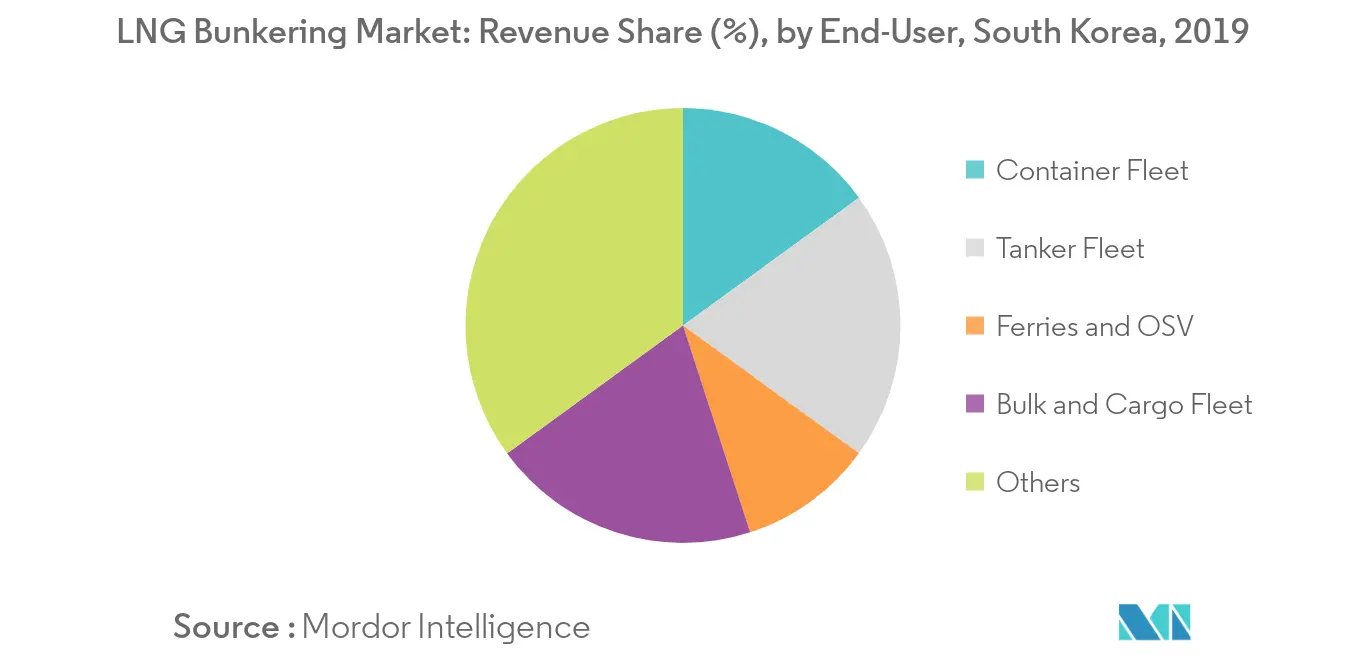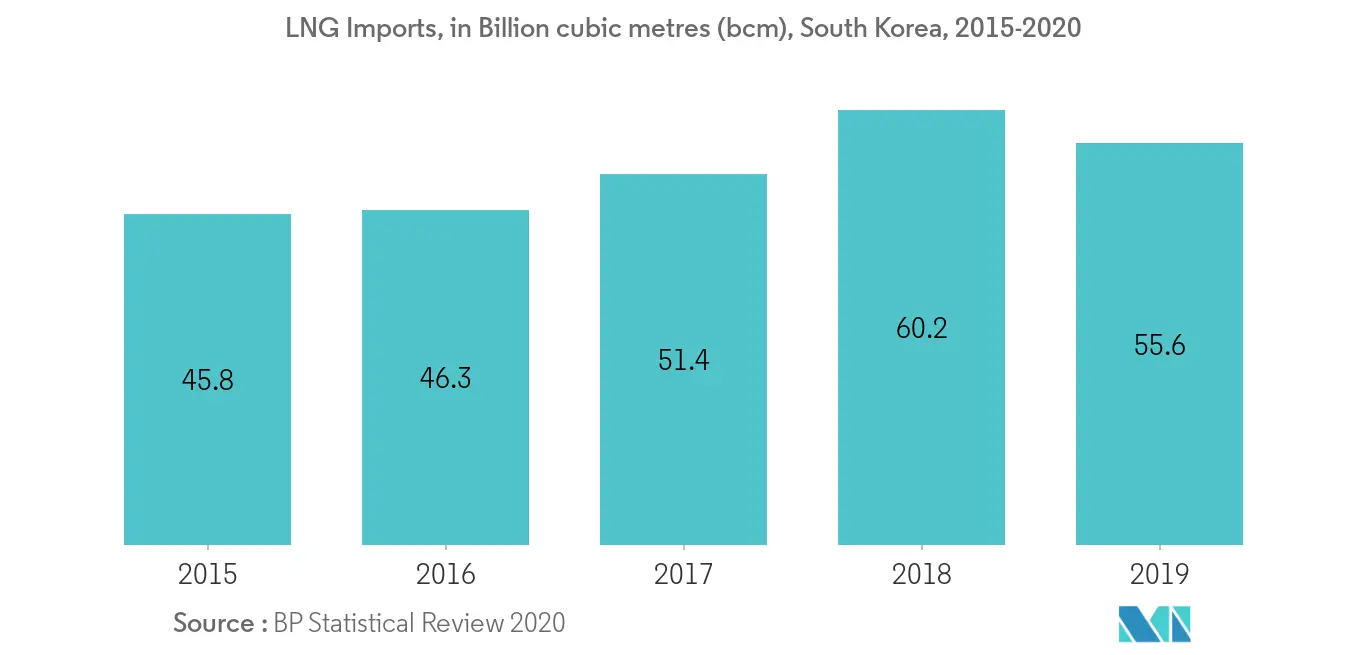Market Trends of South Korea LNG Bunkering Industry
This section covers the major market trends shaping the South Korea LNG Bunkering Market according to our research experts:
Upcoming Projects is Expected to Drive the Market
- South Korea has been promoting the use of liquefied natural gas as a marine fuel and has built the world's largest LNG-fueled bulk carrier, 'Ilshin Green Iris', in 2018.
- In 2018, South Korea's national LNG importer, Korea Gas Corporation (KOGAS), announced that it has plans to invest around USD 890 million in LNG bunkering infrastructure. The company expects to start the LNG bunkering business in 2020 and is planning to build a new LNG bunkering facility in the southern part of the country.
- In 2019, KOGAS announced that it has plans to invest nearly USD 9 billion by 2025, to expand its natural gas capacity and related infrastructure. The company is also expecting to invest around USD 1 billion on LNG bunkering business and hydrogen-fueled cars.
- Korea Line Corporation is building an 18000 cubic meter LNG bunkering vessel for South Korea. The vessel is expected to get delivered in early 2022 and is planning to go on a long-term charter to Shell.
- Furthermore, the South Korean Ministry of Trade, Industry and Energy (MOTIE) plans to support building of a ship-to-ship LNG bunkering vessel with a capacity of 7500 cubic meters of LNG which is capable of directly supplying LNG-powered ships on the ocean. The vessel is expected to be delivered by 2022.
- Hence, the South Korean LNG bunkering market is estimated to be positive for the coming years owing to the upcoming projects.

Increase in LNG Imports is Likely to Drive the Market
- South Korea, the world's third-biggest LNG importer saw LNG imports tumble 7.6% and has reached 55.6 billion cubic meters in 2019 due to the country's LNG demand for power generation declined. But the decrease in LNG price marked from the end of 2019 is likely to raise the demand for LNG as a fuel in the marine industry.
- South Korea imports huge volumes of LNG for power generation and heating. The addition of the LNG bunkering facility in the country is likely to add the country's import volume, strengthening its bargaining position.
- Furthermore, the stricter regulations adopted by the International Maritime Organization (IMO) on sulfur oxide (SOx) emissions, is expected to have a positive impact on LNG imports from 2020.
- Since, South Korea depends exclusively on LNG imports carried by ships to meet its natural gas needs, the rise in LNG imports is likely to drive the LNG bunkering market in South Korea over the forecast period.


